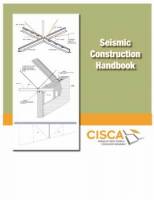

The “I” codes are being adopted around the country state-by-state and there are impacts for lay-in acoustical ceiling installers and architects in areas prone to seismic activity.
First, the new I codes go beyond the old numbered seismic zones (0-4). The old seismic zones were based on the seismic zone map (regions) of the United States, for example Figure 16-2 in the UBC (Uniform Building Code), BOCA/NBC (National Building Code) and the SBC (Standard Building Code) were assigned regions depending on historical seismic data and known faults in the United States. The data was collected by NEHRP (National Earthquake Hazards Reduction Program), a subcommittee of FEMA.
However, this method of determining the structural and/or seismic performance of a particular building left out several very important factors, such as:
• The ground the building is constructed on. For example, a sandy soil is much more likely to experience damage than a firm bedrock.
• The type of building. While all buildings are important, the use and occupancy plays a factor in safety. Isn’t a hospital more important than a storage facility or warehouse?

The 2-inch wall molding requirement kicks in on buildings determined as SDC D, E or F. The intent of the wider lipped edge molding is to hold the lightweight tiles in place as the ceiling shifts from side to side during a seismic event. It is understood by code officials that the falling lightweight tiles would not in themselves hurt anyone, but public panic has been known to create a stampede for the exits.
Prior to bidding suspended ceiling work or installing a lightweight suspended grid system, check with the architect to verify the SDC classification. If you frequently work with SDC D, E and F buildings, you may want to get a copy of the ASCE Minimum Design Loads for Buildings and Other Structures 7-02. The document is now referenced by the codes and is considered part of the I codes. In the occasion there is a conflict between previous standards, the I code and the standards of ASCE 7-02, code officials generally accept the hierarchy of requirements as follows:
1. IBC, The International Building Code
2. ASTM, American Society of Testing Materials
3. ASCE 7-02, American Society of Civil Engineers
4. CISCA, The Ceiling and Interior Systems Construction Association.




Report Abusive Comment